It looks like you're using an Ad Blocker.
Please white-list or disable AboveTopSecret.com in your ad-blocking tool.
Thank you.
Some features of ATS will be disabled while you continue to use an ad-blocker.
share:
I find it fascinating to peer back millions years into the eyes of a survivor, to the exquisite detail and pure emotion of “Toumai”, a
Sahelanthropus tchadensis skull found in Chad in 2005.
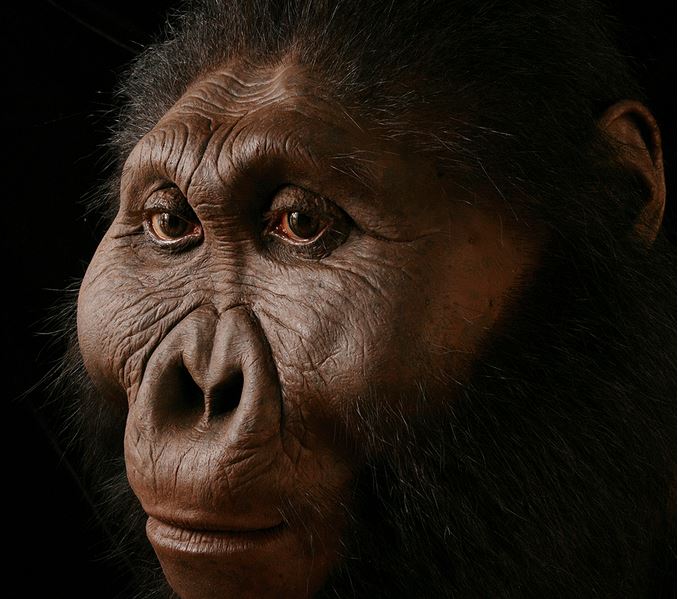
To the wonder and awe of Lucy, Australopithecus afarensis.
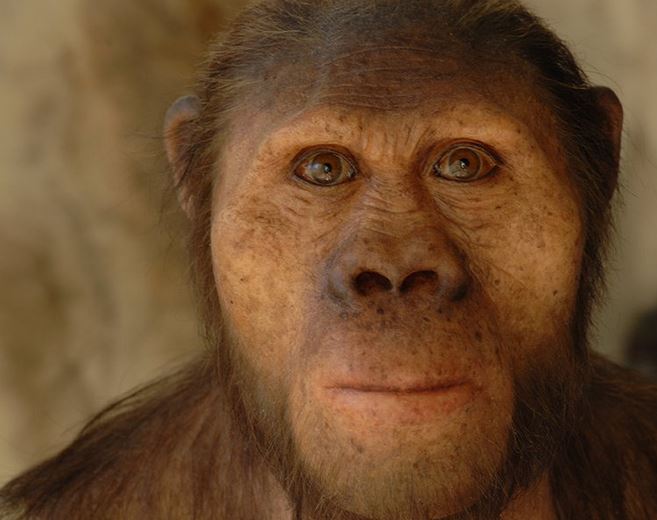
All the way up to the great thinkers of Homo erectus and Homo neanderthalensis.
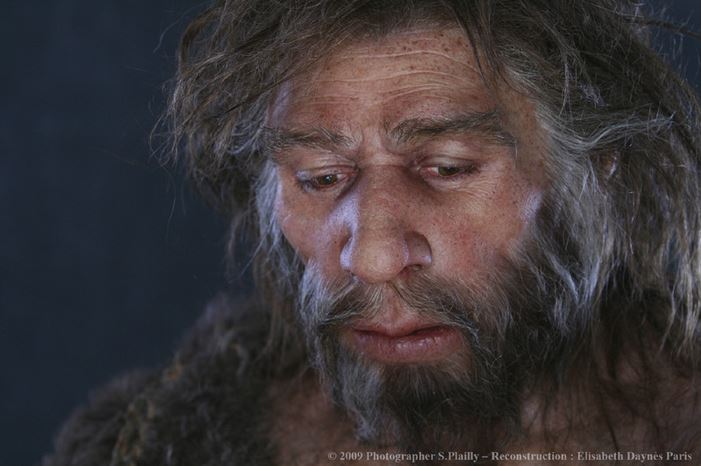
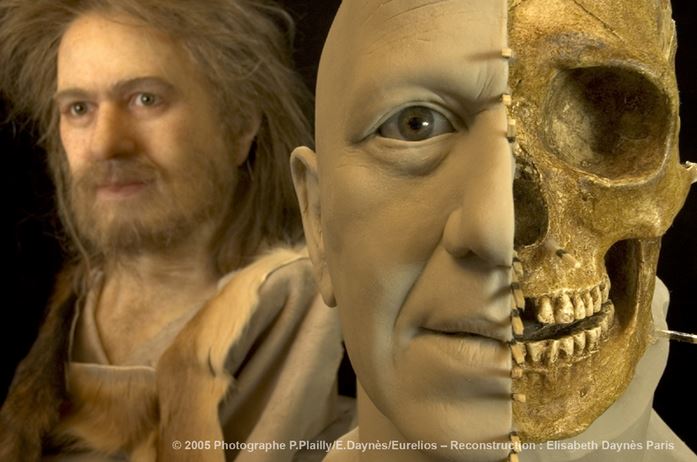
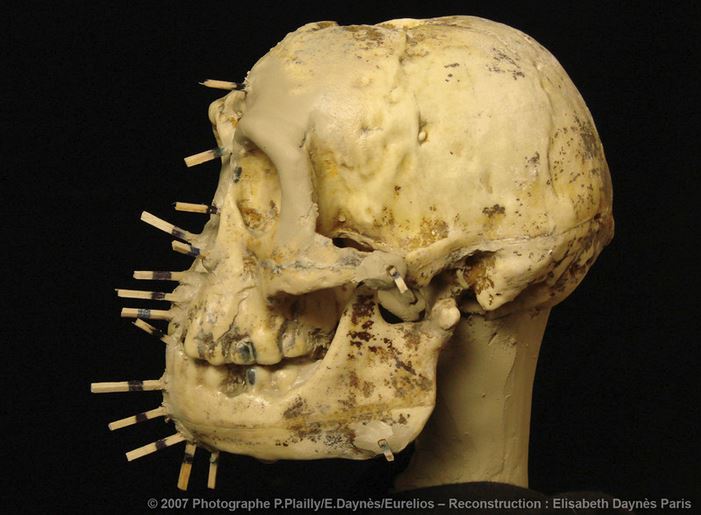
Paleoartist Elisabeth Daynès's work ranks up there with some of the greatest names in the field. This article came out Sept 26th this year and I didn't see any mention of it here so, I hope you guys enjoy it!
What I really would like to see is your thoughts on her interpretations of these skulls and post pics of your favorite paleoartist's in detailed reconstructions in "the Homo" field..
For example, I think Alfonis Kennis has got some good stuff like in this masterpiece.
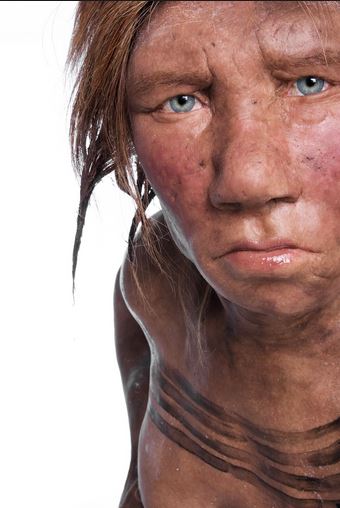

To the wonder and awe of Lucy, Australopithecus afarensis.

All the way up to the great thinkers of Homo erectus and Homo neanderthalensis.



Paleoartist Elisabeth Daynès's work ranks up there with some of the greatest names in the field. This article came out Sept 26th this year and I didn't see any mention of it here so, I hope you guys enjoy it!
What I really would like to see is your thoughts on her interpretations of these skulls and post pics of your favorite paleoartist's in detailed reconstructions in "the Homo" field..
For example, I think Alfonis Kennis has got some good stuff like in this masterpiece.

a reply to: flyingfish
They are beautiful pieces of art.
_____
A question:
Have the reconstruction methods been tested? i.e. The artist is given a skull (real or cast) and they have no idea what the individual looked like. An image (photo) of the persons face is available to compare after the artist's reconstruction is complete.
I am guessing that they do something similar in training.
I would love to see some comparisions between (blind) reconstructions and real facial features.
____
edit to add: I am not doubting the considerable scientific underpinnings of the techniques involved - just interested in how they establish accuracy.
* I found some answers here: Forensic Facial Reconstruction
They are beautiful pieces of art.
_____
A question:
Have the reconstruction methods been tested? i.e. The artist is given a skull (real or cast) and they have no idea what the individual looked like. An image (photo) of the persons face is available to compare after the artist's reconstruction is complete.
I am guessing that they do something similar in training.
I would love to see some comparisions between (blind) reconstructions and real facial features.
____
edit to add: I am not doubting the considerable scientific underpinnings of the techniques involved - just interested in how they establish accuracy.
* I found some answers here: Forensic Facial Reconstruction
edit on 17-11-2014 by UmbraSumus because: add comment
edit on 17-11-2014 by UmbraSumus because: *
I can't help but wonder what the selection process was that lead to the longer proboscis of modern man.
What evolutionary advantage would that give us?
The only thing I can come up with is it keeps water from going up our nostrils.
What evolutionary advantage would that give us?
The only thing I can come up with is it keeps water from going up our nostrils.
originally posted by: UmbraSumus
a reply to: flyingfish
They are beautiful pieces of art.
_____
A question:
Have the reconstruction methods been tested? i.e. The artist is given a skull (real or cast) and they have no idea what the individual looked like. An image (photo) of the persons face is available to compare after the artist's reconstruction is complete.
I am guessing that they do something similar in training.
I would love to see some comparisions between (blind) reconstructions and real facial features.
____
edit to add: I am not doubting the considerable scientific underpinnings of the techniques involved - just interested in how they establish accuracy.
* I found some answers here: Forensic Facial Reconstruction
I have a friend who took this training; as I understand it the hair and eye color is a guess based on geographic location, but the tissue depths on the different parts of the skull is well documented forensically, and nose width is based on the size of the skull nasal aperture. The brow bone and forehead size will determine if the face has more of a human or gorilla look. We can tell by looking at the skull if the owner was Asian, European, African or New World First Nation and generally whether it was male or female; teeth give indications as to age.
These skulls are fascinating and are NOT the result of cradle boarding or any other kind of skull manipulation or molding:
Yes they do brilliant work in reconstructing these creatures.
But again, in my usual questioning style.....why is it, that it seems EVERY ancient skull found in Africa, automatically HAS to be a pre or early Homo, as in Man's direct descendant.
This immediate supposition, discounts that there were ever any early ancestors of the Gorilla, or Chip or monkey, to be found and all the old skulls of an "Ape", must be an early man.
Im sorry, but the first two primate photos of reconstructed ancient skulls, bare a DIRECT resemblance to modern Gorillas and Orangutangs.....not human like at all.
Obviously, Gorillas and Orangs and Gigantopithicus (a homo?), had ancient relatives, that could very well be these so called "Homo" skulls, infact many of the silly named Homo species that have been identified, are probably not direct Human creatures at all, but developed to be modern large apes.
But again, in my usual questioning style.....why is it, that it seems EVERY ancient skull found in Africa, automatically HAS to be a pre or early Homo, as in Man's direct descendant.
This immediate supposition, discounts that there were ever any early ancestors of the Gorilla, or Chip or monkey, to be found and all the old skulls of an "Ape", must be an early man.
Im sorry, but the first two primate photos of reconstructed ancient skulls, bare a DIRECT resemblance to modern Gorillas and Orangutangs.....not human like at all.
Obviously, Gorillas and Orangs and Gigantopithicus (a homo?), had ancient relatives, that could very well be these so called "Homo" skulls, infact many of the silly named Homo species that have been identified, are probably not direct Human creatures at all, but developed to be modern large apes.
(reply to Signalfire)
A couple friends of mine, father Irish, mother Okinawan, had a child. They had her examined at an early age because they were concerned about her unusual skull. It was a little on the large size and the rear of the skull was oddly flattened in profile.
There was no medical problem and she grew into a stunningly beautiful young woman. Her thick, curly locks conceal her oddly shaped skull.
I have a somewhat unusually large cranium. I have a hard time finding a hat that fits. When I graduated, I bought the largest size cap available and it still wouldn't sit on my head right. I shaved my head bald once and my girlfriend told me I looked like a scarecrow with a bowling ball for a head. It's probably just thick bone.
A couple friends of mine, father Irish, mother Okinawan, had a child. They had her examined at an early age because they were concerned about her unusual skull. It was a little on the large size and the rear of the skull was oddly flattened in profile.
There was no medical problem and she grew into a stunningly beautiful young woman. Her thick, curly locks conceal her oddly shaped skull.
I have a somewhat unusually large cranium. I have a hard time finding a hat that fits. When I graduated, I bought the largest size cap available and it still wouldn't sit on my head right. I shaved my head bald once and my girlfriend told me I looked like a scarecrow with a bowling ball for a head. It's probably just thick bone.
a reply to: UmbraSumus
Tested indeed, Elisabeth Daynès is a leading expert in the extremely painstaking process of hominid reconstructions. An expert in comparative anatomy, she combines scientific research, technological innovation and art, in order to bring our human ancestors back to life. She sculpted “Lucy the Australopithecus" and "Flores the hobbit" with an outstanding reputation for teaching and researcher Prof. Bill Jungers, Professor in the Department of Anatomical Sciences.
Tested indeed, Elisabeth Daynès is a leading expert in the extremely painstaking process of hominid reconstructions. An expert in comparative anatomy, she combines scientific research, technological innovation and art, in order to bring our human ancestors back to life. She sculpted “Lucy the Australopithecus" and "Flores the hobbit" with an outstanding reputation for teaching and researcher Prof. Bill Jungers, Professor in the Department of Anatomical Sciences.
edit on fMonday1455117f550607 by flyingfish because: (no reason given)
originally posted by: skunkape23
I can't help but wonder what the selection process was that lead to the longer proboscis of modern man. What evolutionary advantage would that give us? The only thing I can come up with is it keeps water from going up our nostrils.
It warms the air. Modern Africans still have shorter nasal passages. The air is warm enough in the tropics. But they tend to be lanky, which helps dissipate heat.
originally posted by: skunkape23
I can't help but wonder what the selection process was that lead to the longer proboscis of modern man.
What evolutionary advantage would that give us?
The only thing I can come up with is it keeps water from going up our nostrils.
Proboscis is the wrong term. That generally refers to a longer nose that is mobile like an elephant's trunk. Human noses aren't mobile.
But as far as having a nose that sticks out, rather than the traditional flat style found in most apes, it basically allows humans to survive in more environments. With the exception of humans, all of the great apes live in warm, humid environments. In humans, the longer nose helps trap moisture inside and warms up the air, to keep humans viable in colder dryer environments, where most apes could not survive long without special care. Remember, Neanderthal had one of the biggest noses of all hominids, and they populated all across Europe and Asia into those much cooler environments, during a glacial period. Without developing that type of nose, it's doubtful that would have ever happened.
A few other possible advantages:
-Better protection against hits to the face (broken nose is better than a concussion or worse)
-More efficient breathing with wider passages
-Better filter for foreign objects and dust. Less crap in the lungs and breathing passages means better long term health and cardio fitness.
edit on 18-11-2014 by Barcs because: (no reason given)
a reply to: Barcs
Good answer, but to expand when it comes to evolution, sexual selection can play a major role in human/primate appearance as well.
As is evident in the big nose of the proboscis monkey, turns out female proboscis monkeys see the large nose as real turn on, thus selecting males with larger noses for breeding.
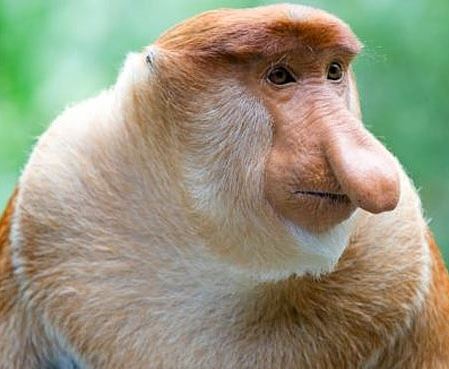
Good answer, but to expand when it comes to evolution, sexual selection can play a major role in human/primate appearance as well.
As is evident in the big nose of the proboscis monkey, turns out female proboscis monkeys see the large nose as real turn on, thus selecting males with larger noses for breeding.

edit on fTuesday1401112f014802 by flyingfish because: (no reason given)
originally posted by: Night Star
Fascinating subject indeed! I look forward to more pics!!
Let's take a look at Homo floresiensis by Paleo-Artist John Gurche.
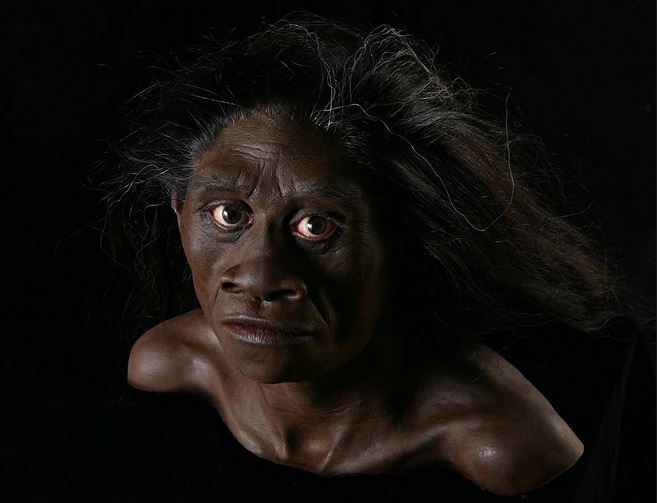
Millions of years of evolution before your eyes.
originally posted by: flyingfish
a reply to: Barcs
Good answer, but to expand when it comes to evolution, sexual selection can play a major role in human/primate appearance as well.
As is evident in the big nose of the proboscis monkey, turns out female proboscis monkeys see the large nose as real turn on, thus selecting males with larger noses for breeding.
Very true! It also explains why our noses have gotten a bit smaller since the Neanderthal days. Today, a smaller sleeker nose is considered more sexy and sexual selection is one of the biggest factors involved in human evolution.
originally posted by: Barcs
originally posted by: flyingfish
a reply to: Barcs
Good answer, but to expand when it comes to evolution, sexual selection can play a major role in human/primate appearance as well.
As is evident in the big nose of the proboscis monkey, turns out female proboscis monkeys see the large nose as real turn on, thus selecting males with larger noses for breeding.
Very true! It also explains why our noses have gotten a bit smaller since the Neanderthal days. Today, a smaller sleeker nose is considered more sexy and sexual selection is one of the biggest factors involved in human evolution.
That and apparently plastic surgery.
a reply to: UmbraSumus
Yes, there many good examples of facial reconstruction from a skull proving it's accuracy, even when the skull is damaged and weathered as we see in this case study.
www.askaforensicartist.com...
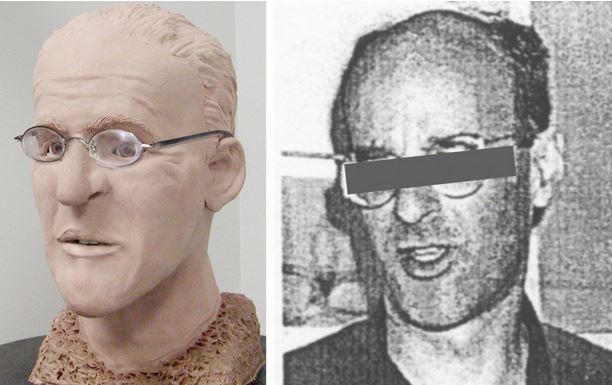
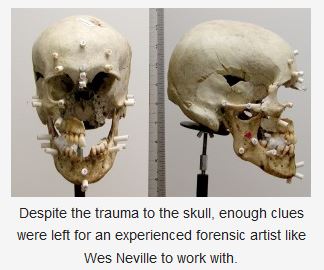
If you notice in the article the investigators consulted Anthropologist to get reconstruction as accurate as possible.
Here are some other great examples..

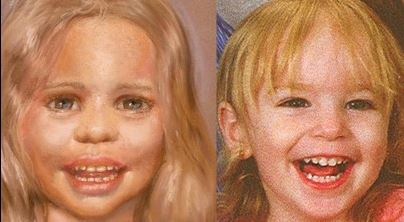
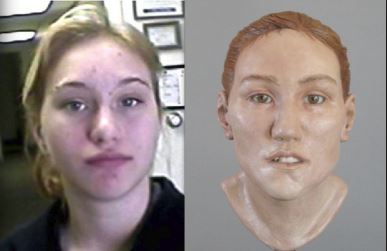
Have the reconstruction methods been tested? i.e. The artist is given a skull (real or cast) and they have no idea what the individual looked like. An image (photo) of the persons face is available to compare after the artist's reconstruction is complete. I am guessing that they do something similar in training. I would love to see some comparisions between (blind) reconstructions and real facial features.
Yes, there many good examples of facial reconstruction from a skull proving it's accuracy, even when the skull is damaged and weathered as we see in this case study.
www.askaforensicartist.com...

On August 8th, 2000, skeletal remains were located in a wooded area near Steinhatchee, Florida (Taylor County). Traditional methods for identifying the remains were exhausted, and in February, 2004, an Investigator with the Taylor County Sheriff’s Office (FL) contacted me about possibly sculpting a facial reconstruction/approximation for their John Doe.
A complete Anthropological report from the University of Florida (Dr. Falsetti), along with law enforcement reports and crime scene photographs were provided to assist in the reconstruction process.
Due to trauma caused by a .38 caliber bullet, the left half of the maxilla, was missing, as well as portions of both orbits, and the nasal opening.

If you notice in the article the investigators consulted Anthropologist to get reconstruction as accurate as possible.
Here are some other great examples..



Far fetched theory maybe, but interesting regarding recreation and the possible shortfalls.
Danny Vendramini
Danny Vendramini
originally posted by: Geomand
Far fetched theory maybe, but interesting regarding recreation and the possible shortfalls.
Danny Vendramini
I did a thread on this guys work in the Bigfoot forum. Cool art work but far fetched indeed.
The problem, Vendramini is not a scientist, but he is a “theatre director, TV producer and award-winning film director and scriptwriter“. He has no training in comparative anatomy, ecology, or evolutionary biology.
originally posted by: Krazysh0t
originally posted by: Barcs
originally posted by: flyingfish
a reply to: Barcs
Good answer, but to expand when it comes to evolution, sexual selection can play a major role in human/primate appearance as well.
As is evident in the big nose of the proboscis monkey, turns out female proboscis monkeys see the large nose as real turn on, thus selecting males with larger noses for breeding.
Very true! It also explains why our noses have gotten a bit smaller since the Neanderthal days. Today, a smaller sleeker nose is considered more sexy and sexual selection is one of the biggest factors involved in human evolution.
That and apparently plastic surgery.
Plastic surgery does not always work out..Lol
entertainment.ie...
A man in China has divorced and then sued his former wife for the equivalent of $120,000 for giving him what he deemed to be ugly children, and the court ruled in his favor.
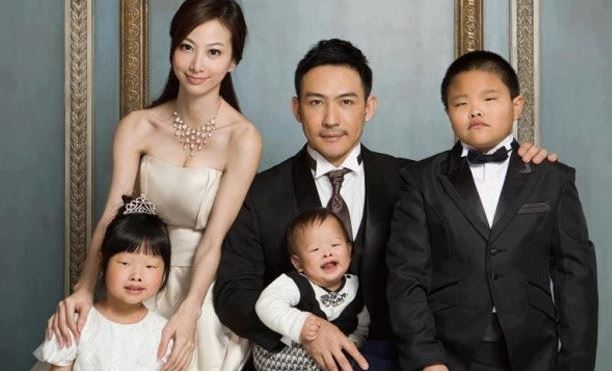
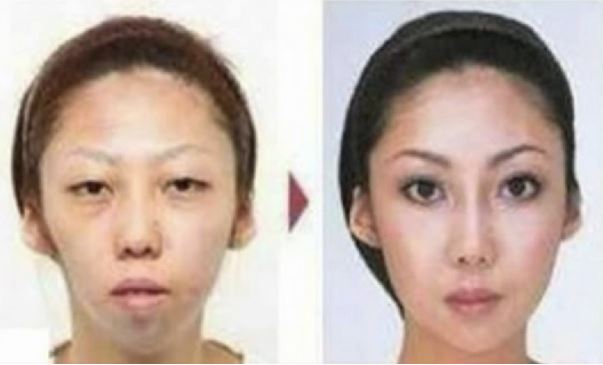
originally posted by: skunkape23
I can't help but wonder what the selection process was that lead to the longer proboscis of modern man.
What evolutionary advantage would that give us?
The only thing I can come up with is it keeps water from going up our nostrils.
I believe a longer nose, ie protruding from the face, is a requirement for living in cold environments.
Not trying to derail the thread. Here is some great entertainment combined with some interesting skull comparisons.
new topics
-
Why isn't Psychiatry involved?
Social Issues and Civil Unrest: 3 hours ago -
Help in song interpretation
Music: 5 hours ago -
FEMA Head Admits Agency Skipped 20 Homes with Trump Signs
Mainstream News: 8 hours ago -
Yet another Hack...
Rant: 9 hours ago
top topics
-
Yet another Hack...
Rant: 9 hours ago, 12 flags -
FEMA Head Admits Agency Skipped 20 Homes with Trump Signs
Mainstream News: 8 hours ago, 12 flags -
U.S. Closes Kyiv Embassy Over ‘Significant Air Attack’ Intelligence
World War Three: 16 hours ago, 10 flags -
Gaetz ethics investigation results "hacked".
US Political Madness: 13 hours ago, 10 flags -
Help in song interpretation
Music: 5 hours ago, 1 flags -
Why isn't Psychiatry involved?
Social Issues and Civil Unrest: 3 hours ago, 0 flags
active topics
-
Post A Funny (T&C Friendly) Pic Part IV: The LOL awakens!
General Chit Chat • 7801 • : PorkChop96 -
Russia Ukraine Update Thread - part 3
World War Three • 6835 • : Oldcarpy2 -
U.S. Closes Kyiv Embassy Over ‘Significant Air Attack’ Intelligence
World War Three • 41 • : Imhere -
Well, here we go red lines crossed Biden gives the go ahead to use long range missiles
World War Three • 312 • : Oldcarpy2 -
Famous Catholic Exorcist Visits Mir-a-Lago
US Political Madness • 19 • : chr0naut -
-@TH3WH17ERABB17- -Q- ---TIME TO SHOW THE WORLD--- -Part- --44--
Dissecting Disinformation • 3331 • : brewtiger123 -
Why isn't Psychiatry involved?
Social Issues and Civil Unrest • 3 • : berbofthegreen -
Help in song interpretation
Music • 1 • : FullHeathen -
President-Elect DONALD TRUMP's 2nd-Term Administration Takes Shape.
Political Ideology • 226 • : WeMustCare -
FEMA Head Admits Agency Skipped 20 Homes with Trump Signs
Mainstream News • 10 • : BingoMcGoof
